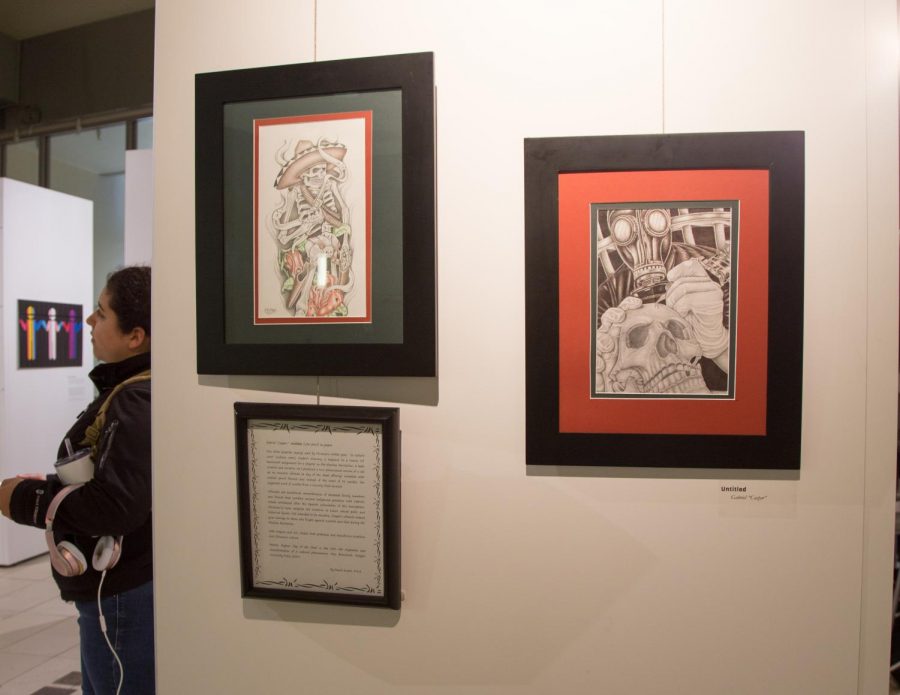Library exhibit sheds light on incarceration issues
The event features several prison art installations and drawings.
March 9, 2019
Art pieces and pictures were exhibited by imprisoned students, which depicted the struggle that inmates in the prison-industrial complex faced while being behind bars and once they are released.
Cultures Confined: Impacts of Incarceration exhibited a large portion of artwork throughout the third floor of the Kellogg Library. In addition to a discussion panel held by faculty, staff and students.
Hosted by Transitions Collective, the Black Student Center, Project Rebound, Black Sistahood, Homie UP and the National Latino Research Center.
Transitions Collective, among with the other groups, aimed to bring light to the issues what incarcerated people face and attempted to bring up possible solutions.
One of the focuses of this exhibit was the fact that many members of the LGBTQIA+ who are behind bars faced bullying by other prisoners and the prison staff. This was especially hard on those of color and those that come from a lower economic background that identify as LGBTQIA+.
According to the panel, the art was done by imprisoned students. It was influenced by Chicanx culture.
A lot of the artwork was done by prisoners taking classes through the Homie UP, or Homie Universidad Popular, a program which helps inmates get a better quality of education.
This program aims to allow its students to express themselves through art. One of the pieces displayed was that of an ofrenda, a Mexican offering table for Day of the Dead. Another was of a young woman with her face drawn as a skeleton.
It allowed for a conversation to come about regarding the injustices that are sometimes placed upon individuals for something that they have no control over and no way of changing. This racial prejudice was also felt by members of the Chicanx community.
A chart on the wall showed a timeline of the race classification for black people from the U.S. Census up until 2010 with pertinent questions underneath it asking students to reflect on the way that their own race impacts how they and their families are viewed in the eyes of the law.
Perhaps one of the most striking parts of the exhibit was the display of baby onesies, each with statistics about women and children in the prison system, a place that is mainly dominated by men. One of the onesies said “12 year-old Lionel Tate was the youngest to be sentenced to life in prison without parole.” Another said “2000+ babies born in prison each year.”
According to the panel on the exhibit, there are negative effects on children whose parents have gone to or are in prison. Those children, more often than not, will “end up in Child Protective Services, the foster care system or juvenile hall.”
If interested, students can visit the exhibit before it ends on July 1.


